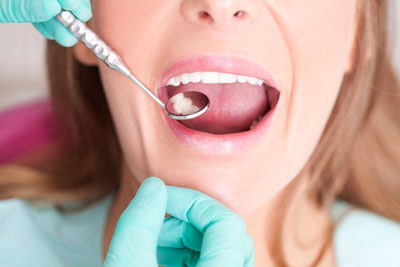Extractions
 While our teeth were meant to last forever, sometimes when there’s severe damage pulling (or extracting) a tooth is necessary. The most common reasons you might need an extraction are:
While our teeth were meant to last forever, sometimes when there’s severe damage pulling (or extracting) a tooth is necessary. The most common reasons you might need an extraction are:
- Trauma to the tooth
- Tooth decay
- Extra teeth
- Infection
- Wisdom teeth
- Periodontal disease
What to Expect
We pride ourselves on using advanced technology during your care with us, resulting in an easy, smooth treatment plan. When you visit us, you can expect the following:
- A detailed exam or X-rays will be done to ensure an extraction is necessary and cannot be fixed with a crown, filling, or other treatment.
- The proper anesthetic will be given for a more relaxing procedure:
- Local anesthesia. Usually a local anesthetic is given to you in the area of your extracted tooth. If this is the case, the area will be numb to pain but you’ll still be able to feel pressure and noises from the procedure.
- General anesthesia. General anesthetics are used for more complex cases in which gums may need to be cut away or more than one tooth is extracted. This means you’re ‘put under’ for the procedure, usually through a gas or injected anesthetic.
- After the extraction, your blood should start to clot and begin to heal in the tooth’s empty socket. We’ll pack the area with gauze so that it can start the healing process.
- We’ll spend some time with you and answer any questions you may have and talk about the healing process.
Healing and Home Care
Home care for an extraction can involve taking over-the-counter pain medications to help with any tenderness in the days following the procedure and should be taken before the anesthesia wears off. More complex extractions may involve additional prescriptions recommended by your dentist.
When it comes to eating, we recommend soft, cold foods for the few days after the extraction. Try to avoid using straws as the sucking motion can complicate the healing process.
You should clean and brush your teeth as usual; changing your gauze pads often and a warm, salt water rinse 24 hours after the procedure to keep the area clean. Smoking should be refrained from for 24-72 hours.
If you notice any swelling, ice packs may help reduce it. There can also be stitches involved in more complex extractions, usually self-dissolving stitches.
It’s extremely important to follow after-care directions to prevent any complications. For example, the blood clot that forms after extraction can become dislodged and leave the hole exposed. This situation, called dry socket, can cause an infection so we strongly recommend taking it easy to ensure you heal properly.
CONTACT US
Learn More Today
As always, we’re here to answer any questions you may have along the way. Call us today!
